Habitat
Riccia sorocarpa, also known as the common crystalwort, is often found growing in gardens, on bare soils, gravel footpaths, and sometimes on muddy soils near lakes or reservoirs. This species can grow on acidic or base-rich substrates.

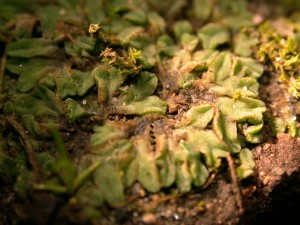
Gametophyte
Overall Structure:
The bluish-green thallus of R. sorocarpa forms irregular rosettes and the thallus branches are not as long as they are wide. A “V-shaped” groove can be seen near the median.
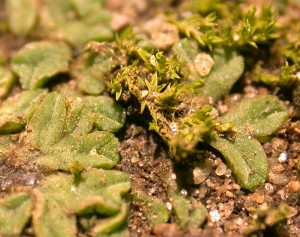
Thallus:
The small thalli of R. sorocarpa are bluish-green but become brownish when older.

The presence ventral, colorless, scales can be seen along the margin with the aid of a hand lens.
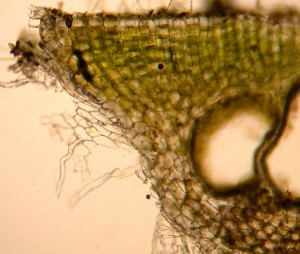
Rhizoids:
Like other liverworts, the rhizoids are unicellular.

Sporophyte
The sporophyte remains within the thallus until it is exposed following the decomposition of the thallus.
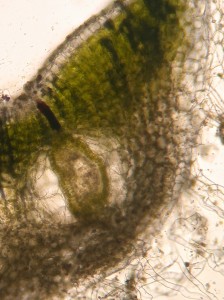
You can easily discern the archegonial wall around this very young sporophyte (note the neck).

remnants of immature sporocytes within young sporangium…again not the neck of the archegonium

Not the greatest picture, but shows the tetrads of spores (meiotic products)
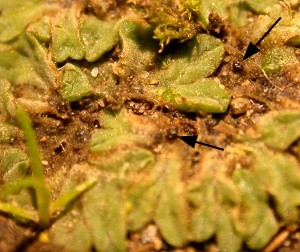
Mature sporangia remain in the thallus and are released when the thallus degenerates. Sorangia indicated with arrows.
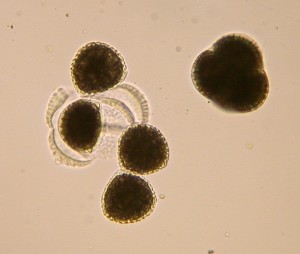
Spores released from the tetrad

Mature spores
Vegetative Reproduction
